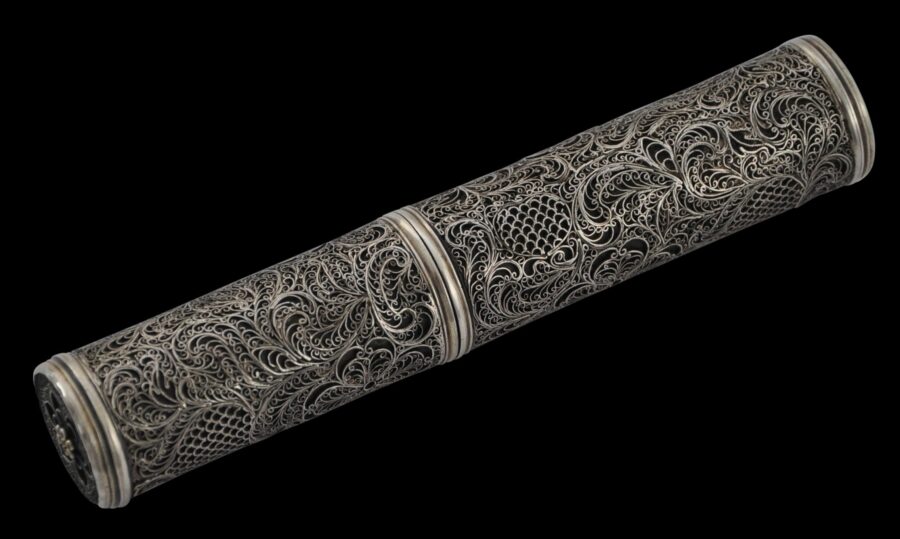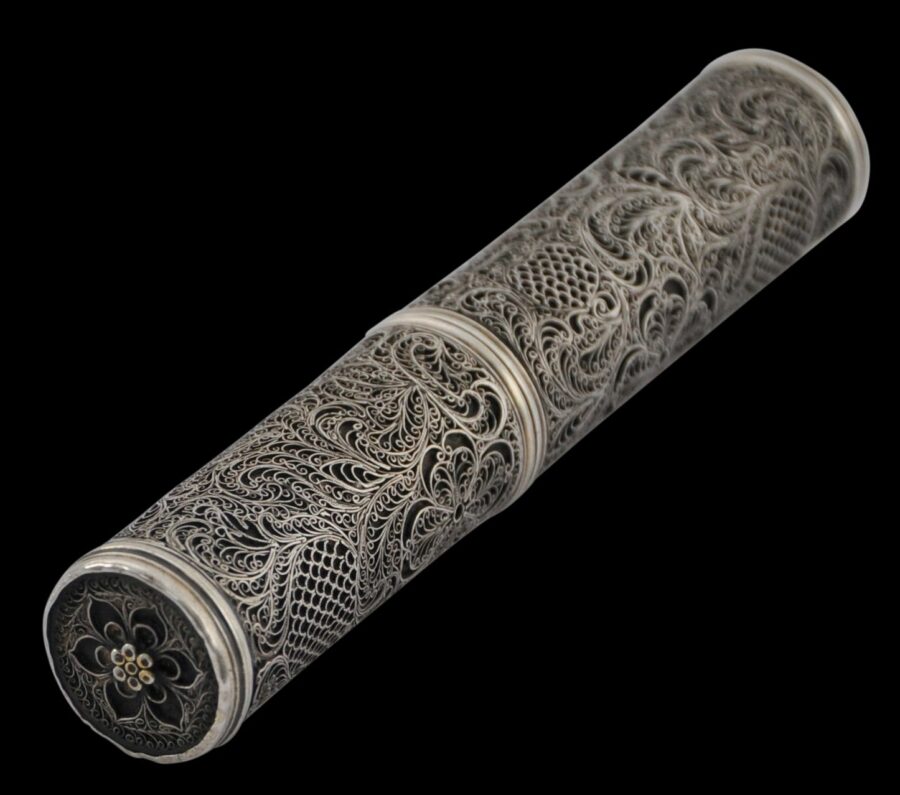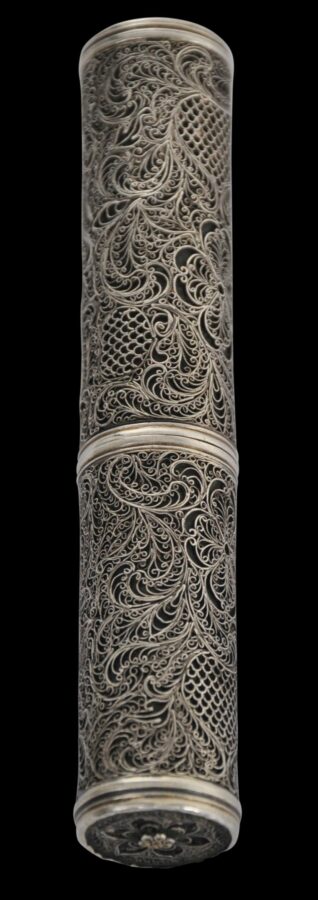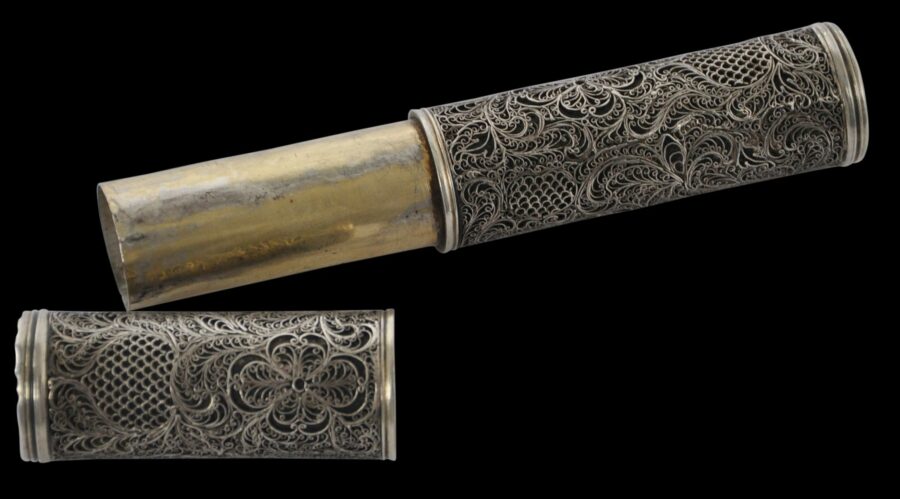This very fine needle case (or possibly a small cheroot case) comprises an outer covering of very fine silver filigree over a beaten silver inner sleeve. The filigree is in the form of flowers and fruits. Each end is decorated with either a flower or star anise motifs (a typically Malay motif used on silver).
The fine wispiness of the filigree and the floral and leafy patterns in which it has been arrayed are suggestive of origins in the Dutch East Indies, possibly Batavia.
The case pulls apart in the middle and the two halves fit together tightly.
Items such as these were commissioned by the Dutch East India Company (VOC) in the eighteenth century for export to Europe and for use by VOC officials and their families themselves. Probably this case was intended as a needle case for a VOC official’s wife or for export to Europe. Embroidery was a preferred past-time for many well-to-do eighteenth century European wives.
This example is in very fine condition. All the filigree is intact and especially fine.
References
Corrigan, K., J. van Campen, & F. Diercks (eds.), Asian in Amsterdam: The Culture of Luxury in the Golden Age, Peabody Essex Museum/Rijksmuseum, 2015.
Zandvlieyt, K. et al, The Dutch Encounter with Asia 1600-1950, Rijksmuseum Amsterdam, 2002.







